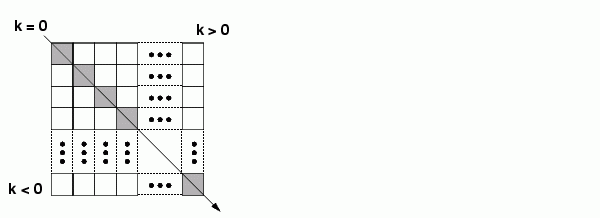

| MATLAB Function Reference |   |
Diagonal matrices and diagonals of a matrix
Syntax
X = diag(v,k) X = diag(v) v = diag(X,k) v = diag(X)
Description
X = diag(v,k)
when v is a vector of n components, returns a square matrix X of order n+abs(k), with the elements of v on the kth diagonal. k = 0 represents the main diagonal, k > 0 above the main diagonal, and k < 0 below the main diagonal.

X = diag(v)
puts v on the main diagonal, same as above with k = 0.
v = diag(X,k)
for matrix X, returns a column vector v formed from the elements of the kth diagonal of X.
v = diag(X)
returns the main diagonal of X, same as above with k = 0.
Examples
diag(diag(X)) is a diagonal matrix.
sum(diag(X)) is the trace of X.
diag(-m:m)+diag(ones(2*m,1),1)+diag(ones(2*m,1),-1)
produces a tridiagonal matrix of order 2*m+1.
See Also
 | detrend | dialog |  |